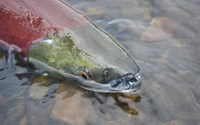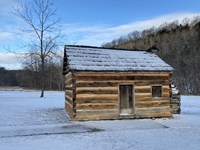- Lesson Plan (29)
- Field Trips (7)
- Student Activities (5)
- Distance Learning (4)
- Guest Speakers (1)
- Media for Loan (1)
- Primary Sources (1)
- Everglades National Park (3)
- Carl Sandburg Home National Historic Site (2)
- Death Valley National Park (2)
- Glacier National Park (2)
- Haleakalā National Park (2)
- New Orleans Jazz National Historical Park (2)
- Sleeping Bear Dunes National Lakeshore (2)
- Statue Of Liberty National Monument (2)
- Abraham Lincoln Birthplace National Historical Park (1)
- Show More ...
- Social Studies (35)
- Science (17)
- Literacy and Language Arts (16)
- Math (5)
Showing 46 results for meanings ...
The Many Meanings of Justice in American Society
- Type: Field Trips
- Grade Levels: Middle School: Sixth Grade through Eighth Grade
Me and My Park
Take Me to the River
- Type: Field Trips
- Grade Levels: Upper Elementary: Third Grade through Fifth Grade

Take Me to the River is a hands-on educational program designed for fourth graders run out of Hidden Falls Regional Park each fall. The program focuses primarily on the cultural history of the river, but also addresses geography, geology, and physical science through hands-on activities. Students rotate through three activity stations led by National Park Service rangers including orienteering, geocaching, shelter-building, and fire-building.
What's Living Around Me?
- Type: Lesson Plan
- Grade Levels: Lower Elementary: Pre-Kindergarten through Second Grade
Students will explore and investigate 4 different areas around campus (mud puddle, rocky parking lot, grass field, tree base) to determine other living things in those areas and what they might need from those areas.
Can You Identify Me?
- Type: Lesson Plan
- Grade Levels: High School: Ninth Grade through Twelfth Grade

Students will have the opportunity to study and identify fish as really wildlife biologists. They will watch clips taken of salmon swimming up stream through the Silver Salmon Weir in Lake Clark National Park. Their job will be to use their identification cards and see how many salmon they can identify as they swim past. Be careful -- some salmon look awfully similar!
You Can't See Me
- Type: Field Trips ... Student Activities
- Grade Levels: Lower Elementary: Pre-Kindergarten through Second Grade
On this field trip, students will understand the importance of natural coloration and camouflage in survival, considering the colors of various animals found at the park. They will look for colored items placed in a wooded or grassy area. This outdoor activity could also be done in another natural area or on school grounds.
Lincoln and Me: Exploring the Past and Present
- Type: Lesson Plan
- Grade Levels: Lower Elementary: Pre-Kindergarten through Second Grade
Virtual Ranger Visit: What Symbolizes Me?
- Type: Distance Learning
- Grade Levels: Lower Elementary: Pre-Kindergarten through Second Grade
Primarily Me: Primary Sources from Whitman Mission
- Type: Lesson Plan
- Grade Levels: Upper Elementary: Third Grade through Fifth Grade
"Tell Me a Story" Native People: 4-6 Grade
- Type: Lesson Plan
- Grade Levels: Upper Elementary: Third Grade through Fifth Grade
Consider the Source: The Words We Mean: An Exercise and Study on Euphemisms, Language, and Dialogue about Chattel Slavery in Western North Carolina and the United States (Grades 6-8) Lesson 1 of 3 Carl Sandburg Home NHS
- Type: Lesson Plan
- Grade Levels: Middle School: Sixth Grade through Eighth Grade

This is the 1st of 3 lessons designed to contribute to middle school student's working knowledge of Black history in Western North Carolina. This lesson introduces students to the language of Black history and its relevance to their own dialogues and historical skills. With multiple interactive opportunities, and historical and artistic sources, students will develop language arts and critical thinking skills.
"Designs Of My World" Native People: 4-6 Grade
- Type: Lesson Plan
- Grade Levels: Upper Elementary: Third Grade through Fifth Grade
Monumental Reflection
Interpreting A Symbol Post Statue of Liberty Lesson Plan
- Type: Lesson Plan
- Grade Levels: Upper Elementary: Third Grade through Fifth Grade

At the end of the lesson, students will be able to: -Describe several definitions that the Statue of Liberty has held over time. -Explain the importance of Emma Lazarus’ poem as an example of how the Statue of Liberty has continued to bring meaning to different groups of people. -Create their interpretations about the Statue of Liberty as the monument’s meaning evolves, past and present.
Cold War Diplomacy at Gettysburg (Field Trip Program)
- Type: Field Trips
- Grade Levels: High School: Ninth Grade through Twelfth Grade

President Eisenhower believed we can all be "main street diplomats." What does that mean? During his presidency, Dwight Eisenhower used his Gettysburg farm to conduct diplomacy and work toward a better world. This program gives students a chance to explore Eisenhower's actions and what it means to be a leader in our communities today.













